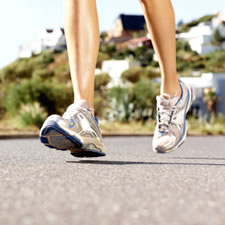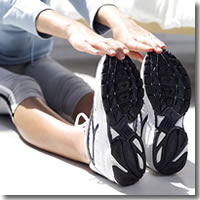- Home
- Program
- Contact
- Blog
- Free Body Fat Analysis
- Free Resources
- Chad White lost 35 pounds with Dr. Sattele's Rapid Weight Loss Program
- Kay Moore lost 89 pounds with Dr. Sattele's Rapid Weight Loss Program
- Jennie McKenzie lost 60 pounds with Dr. Sattele's Rapid Weight Loss Program
- Tina Askin tina lost 75 pounds and went from a size 20 to size 8 with Dr. Sattele's Rapid Weight Loss Program
- Thank You
- More
- August- VIP Deals
- Special Offers
- GLP-1 Medication for Weight Loss
- Meet Dr. Sattele
- Rapid Weight Loss Program with HCG
- EZDietPlanner Mobile App
- Before & After Photos
- Success Story Videos
- Body Slimming Procedures
- Skin Care Procedures
- Blog
- Free Body Fat Analysis
- Free Resources
- Chad White lost 35 pounds with Dr. Sattele's Rapid Weight Loss Program
- Kay Moore lost 89 pounds with Dr. Sattele's Rapid Weight Loss Program
- Jennie McKenzie lost 60 pounds with Dr. Sattele's Rapid Weight Loss Program
- Tina Askin tina lost 75 pounds and went from a size 20 to size 8 with Dr. Sattele's Rapid Weight Loss Program
- Thank You
 Stress is a reality in most people’s life. When stress grips you, there's no time to stop for it. Unfortunately, besides the direct effects stress can have on your health (e.g., hypertension, heart disease), it's the number one cause of overeating. So the next time you're under a lot of stress, before hitting the fast food restaurant, learn whether you were driven there by your emotions.
Stress is a reality in most people’s life. When stress grips you, there's no time to stop for it. Unfortunately, besides the direct effects stress can have on your health (e.g., hypertension, heart disease), it's the number one cause of overeating. So the next time you're under a lot of stress, before hitting the fast food restaurant, learn whether you were driven there by your emotions.
What is emotional eating?
It occurs when your feelings dictate whether you are hungry or not. Also, you eat to soothe your feelings when something is wrong.Remember, eating is a pleasurable activity and stimulates the same center of the brain that releases those “feel good” endorphins. Wouldn’t you know it; celery is not a comfort food that makes you feel good. You will rather eat foods like macaroni and cheese, fried chicken, potato chips, ice cream and anything made from dough.
The way to counter emotional eating is to focus on your body. Recognize that you are stressed or upset or sad. Pay particular attention to how and what you eat when you are on the emotional rollercoaster.
1. You are hit by hunger all of the sudden. You may have eaten not long before. Instead of reaching for the chips, think about what may be causing your perceived hunger.
2. You eat and eat without ever feeling full. Emotional eating can be mind-numbing. You continue to shovel in the food even if you are not hungry. It is a mechanism to cope with your emotions instead of facing the situation that is causing the problem.
3. You are making food choices that you wouldn’t normally make. Remember those comfort foods? If you were set to make dinner for the family, stopping off at drive-thru and buying pizza or a greasy hamburger could be due to emotional issues. Experiencing depression can lead to eating unhealthy foods and feeling guilty later.
Stress gets to everyone. Don’t let it ruin your healthy routine. Recognize when you are in the midst of an emotional crisis and watch what you eat.
 Here are 10 tips for women to stay fit and healthy:
Here are 10 tips for women to stay fit and healthy: 1. Staying fit and healthy starts with a balanced diet. Know and monitor the right weight for your age. Consult your doctor to learn what food you should avoid and follow your eating discipline routines. If you are trying to lose some weight, foods with high calories should be omitted from your meals. Food with high fiber and low fat should be included a priority in your grocery list instead of red meat, sugars and fats.
2. Drink plenty of water. Drinking at least eight glasses of water everyday. This cleanses the body from impurities. It is also advised for lactating women to increase water intake to keep the body hydrated.
3. Take Vitamins and Supplements. Do not forget your Calcium supplement. Sufficient Calcium intake is beneficial for women of all ages. This has been proven to prevent having cramps and Pre-Menstrual Period (PMS) Symptoms. It also prevents Osteoporosis especially for menopausal women. Vitamin E boosts strong immune system. Women who undergo menopausal period should take Vitamin E-400 as it stops night sweats and hot flashes. Also, Vitamin E is said to be best in avoiding wrinkles when aging.
4. Quit smoking. If you are smoking, stop. It is also a big "NO" for pregnant women, as this will affect the health of the baby. Pregnant women who smoke may pass the harmful content of cigarettes to babies through the bloodstream. Recent studies have shown that women smokers are more prone to diseases than men smokers. Women who smoke have a high risk of getting breast cancer. Also limit your alcohol intake.
5. Incorporate exercises in your daily routine. Take a walk after work, use stairs instead of elevator or play with your kids when you are at home. Home exercises are also effective especially when you do not have time to go to the gym and would like to lose some weight. Yoga and Pilates are only a few of the many effective exercises you can do at home. Exercises help in limiting the risk of cardiovascular diseases.
6. Avoid stress. Many women are prone to too much stress. Stress has been known as cause to many sicknesses. As much as possible take time to relax. Read a good book, hang out with friends and engage into sports. Pamper yourself by going to parlors or you can do some shopping. And do not forget to get enough sleep to revive your energy.
7. Use sunscreen to protect your skin from the harmful rays of the sun. Wear hats when under the sun to protect your skin. Too much sun is bad for your skin. The skin is prone to cancer when exposed to too much sunlight. It also speeds up the aging of skin cells, which causes wrinkles to women.
8. Make sure to visit your dentist to keep that beautiful smile. Always have it cleaned to prevent cavities and bad breath.
9. Visit your Gynecologist. Women who are eighteen and above should have their Physical Examination annually especially for the Pap Smear test. Women who are forty and up should have their mammograms and the Breast self-exam is encouraged once puberty has been reached and should be a habit as they mature
10. Safe sex is strongly recommended. Use condoms to prevent sexually transmitted diseases.
 If you have a child of 6 to 8 years old that wants to start exercising and lifting weights, you may find yourself wondering what you should do. While some think it is perfectly fine for children to exercise, there are others that think differently.
If you have a child of 6 to 8 years old that wants to start exercising and lifting weights, you may find yourself wondering what you should do. While some think it is perfectly fine for children to exercise, there are others that think differently. The long and short of it is that yes, it is beneficial for your child to partake in exercise or a weight training regimen although there are a few things that you should keep in mind once this starts to happen.
No matter how you look at it, children aren't minature adults and therefore you can't use the same methods with growing children that you can use with adults, as children are different from adultsemotionally, anatomically, and physiologically.
All children have immature skeletons, as their bones don't mature until they get 14 - 22 years of age. With girls, exercise during childhood can have very critical effects on bone health that can last for their entire lives.
Children are often times vulnerable to growth related overuse injuries such as Osgood schlatter disease. Children have immature temperature regulation systems due to their having a large surface area compared to their muscle mass which will cause them to be more susceptible to injury when they aren't properly warmed up.
Children don't sweat as much as adults do, so they will be more susceptible to heat exhaustion as well as a heat stroke. Due to their low muscle mass and immature hormone system, it makes it harder for them to develop strength and speed. Their breathing and heart response during exercise are also different from an adults, which will affect their capacity for exercise.
On the other hand, young boys and girls can drastically improve their strength with weight training although opposed to adults, neurological factors instead of muscle growth factors are mostly responsible.
When you consider programs for children, first and foremost you should obtain a medical clearance. The first approach to designing a program is to establish a repetition range of 8 - 12 and keep the work load appropriate for the range.
You should ensure that workouts are spread out enough to have at least 1 - 2 full days of rest between workouts. The main focus when working out should be on the form of every exercise performed, and not on the amount of weight being lifted.
Before weight training, warm up and stretching should be done. Start your children off with light loads and then make adjustments accordingly. No more than 3 non consecutive exercise sessions should be done in a week. You should also see to it that they drink plenty of water before, during, and after exercise. Getting enough water is very important with exercise, as it is often times very easy to get dehydrated - especially with children.
 Remember when your parents used to load your plate up with veggies and not let you have any dessert until you finished every last bit? They just might have been onto something with all those dark green vegetables.
Remember when your parents used to load your plate up with veggies and not let you have any dessert until you finished every last bit? They just might have been onto something with all those dark green vegetables.Take a look at Popeye and his spinach. He would down a can and practically lift a car. Impressive wasn't it? Maybe the general idea isn't so far fetched.
Five of the healthiest dark green vegetables include broccoli, kale, spinach, romaine lettuce and Swiss chard. These vegetables, identified by their dark green color, are rich in antioxidants and usually have large amounts of phytochemicals like Vitamin C.
If you've turned on the television in the past three years, antioxidants have been all over the news. They've been proven to help reduce the risk of cancer and strengthen the immune system.
Many foods tend to lose nutrients when cooked. The great thing about these dark green vegetables is that you can find them easily in your grocery store and they taste great with little or no cooking, leaving much of their nutrients intact.
Here is some important information about these healthy veggies:
Broccoli is a fun vegetable for kids because it feels like you're eating a small tree. In fact, the little buds are actually tiny flourettes that contain more than twice the amount of Vitamin C of an orange.
Some facts about broccoli you may not already know include:
- Broccoli is a great source of fiber, both soluble and insoluble. It not only meets both types of fiber needs, but it's also a rich source to add to your diet.
- Research has shown indole-3-carbinol - found in the phytonutrients of broccoli - actually deactivates a metabolite which can become cancerous.
- Broccoli also helps restore sun-damaged skin, reduces the risk of heart disease, and boosts the immune system. At the same time, it also promotes healthy bone growth due to its massive amounts of calcium.
- The folic acid found in kale is a great addition to your diet if you suffer from poor hair, skin and nails.
- In addition, the potassium helps to promote the breakdown of lactic acid in muscles after a workout, and is a great food to help prevent muscle soreness in the recovery process.
- Vitamin K helps promote healthy eye and brain function. The next time you have to spend hours staring at a computer screen or studying for that big exam, try some Swiss chard and let your mind be at ease knowing your brain is getting the nutrients it needs.
Spinach is a lean mean green antioxidant-packing machine, rich in flavor and in Vitamins A and C, and iron.
- Spinach is loaded with important vitamins and minerals to promote healthy brain function as well as strong bones and muscles.
- Next time you have a salad, try it with spinach instead of lettuce for a little variety and a big explosion of taste.
Romaine lettuce, while still made up mostly of water, is packed with antioxidants and fiber.
The darker green the leaf, the more folic acid is present, which prevents heart disease.
Even though lettuce seems so simple, look at some of its complex attributes:
- Lettuce is great for diets since it's very low in calories.
- Magnesium, found in romaine lettuce, does wonders in revitalizing muscular tissues, the brain and the nerves.
- The chlorophyll-packed juice in lettuce is very helpful in maintaining normal hair color.
- Lettuce is high in iron, which helps the formation of red blood cells.
- Lettuce may help in treating insomnia, acid indigestion, colitis, constipation, gout, stress and many other diseases as well.
While you might have been forced to eat your dark green veggies as a kid, now you know why it was so important. Even today, your dark greens are vital to your health and well-being. Try these dark greens in some new recipes; you just might surprise yourself and actually enjoy it!
 If exercise is good for the body, why do so many people get injured? That's a good question. Like anything else, you have to ease into exercise and there is a basic method everyone can follow for better results. Don't forget your warm-up.
If exercise is good for the body, why do so many people get injured? That's a good question. Like anything else, you have to ease into exercise and there is a basic method everyone can follow for better results. Don't forget your warm-up. Before sprinting off into the distance, it is important to warm up first. Like the name implies, warming up gets the body prepared for a more vigorous workout. It's like your car. In the morning, especially winter mornings, the car may not turn over the first time you try to start it. Gas can settle in the bottom of the tank overnight as the temperature drops. It takes a few minutes after you get it started for the inner workings to get going.
The same goes for your engine. After a night of sleep or a day of regular activity, your muscles are tight. They need to limber up a little before you go full tilt into your workout. Otherwise, you risk serious injury and a blow to your motivation.
If you are thinking that you can get away without warming up, just read the benefits of warm-ups that you may not have been enjoying up until now:
1. Your heart rate rises slowly. The body gets prepared to exercise. You won't feel like your heart is beating out of your chest within five minutes. Your blood gets time to circulate properly and send rich oxygen to feed those muscles and slow the build-up of lactic acid (what causes those muscle cramps).
2. You can avoid injury. Most injuries come from lack of proper warm-up routines. When the muscles are more pliable, they move easier and resist injuries. Quick twists and turns are tolerated well by the body when all muscles are ready to go.
3. Endurance is increased. When the body is warm and the blood is circulating, you can work out longer. It does take time to build up endurance but you will see potentially greater results with warm-ups than without.
4. It promotes a proper breathing technique. When you go running or play that sport right away, you are less likely to be breathing efficiently. Throughout the warm-up, you are setting your breathing patterns for the entire workout. Breathing in through the nose and out through the mouth can prevent dry mouth and also gasping for air.
5. You sweat sooner. Sweating is usually a sign that your body is warm and reaching its peak of efficiency. Warming up for five or ten minutes at a slower pace will get the sweat rolling. Besides warming up the muscles it is also cooling at the same time.
If you haven't had these kinds of experiences, then try warming up first. Besides the benefits, it also helps prevent serious injuries that can stop you from exercising for weeks or even months.
© Physicians Marketing Solutions Inc. All rights reserved.
